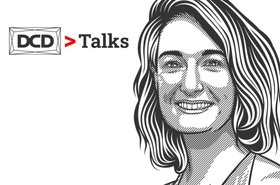While it is undoubtedly a good thing that there is so much demand for the industry, many companies are feeling the strain.
NTT’s Amy Daniell is the Senior Director of Hyperscale, and is up against these challenges.
“Our customers are driving our need to deliver faster, which is actually being driven by people like yourselves. People who watch everything on Netflix, and use Teams to chat with their friends.
“The desire to build has increased in the last 12 to 18 months because of the pandemic, and now going into the next five to 10 years, I'm expecting to build an entire campus that I thought was gonna last us for 10 years worth of growth, in under three.”
This growth brings with it a complexity of logistical issues.
“We all know that finding available sites that have power is a nightmare at the moment. That is really slowing everybody down. Permits and land zoning, people are working from home and government institutions weren't really geared up to be able to continue supporting those during the pandemic. So permits didn't get issued for a very long time.
“Previously, permits would turn around in six to eight weeks, they're now taking 12 to 18 months to turn around. That's a real challenge for us. The supply chain is 100 percent under a lot of pressure, manufacturing is just at full capacity. We're all building, we all want to build faster, and we're all building at the same time.”
In light of this, companies across the industry have taken different approaches to try and make the build process more efficient. However, as experienced by NTT, this is sometimes easier said than done.
“In the UK, we're using prefabricated electrical equipment. Everything arrives in a container, we slot it in connected up and then off we go. That is helping us to achieve shorter construction time frames.
“We're trying to remove as much of the associated space in the data center as possible, so we are getting rid of the offices, getting rid of things that need lots of windows, and making it close to a big concrete box.
“We tried to be more standardized in building the campus because we were moving through so quickly. Unfortunately, our customers had different ideas. We had to keep tweaking the buildings and they seem to have become pretty unique in themselves as we've gone through the evolution of each build.”
It is this shared experience that reinforces how important it is that the industry pool its knowledge and expertise. Companies are all working towards the same goal – the more efficiently it can be achieved, the better.


